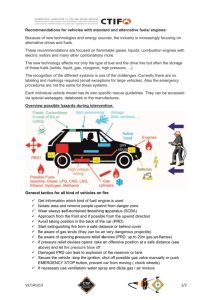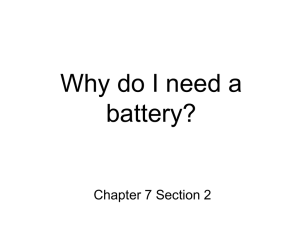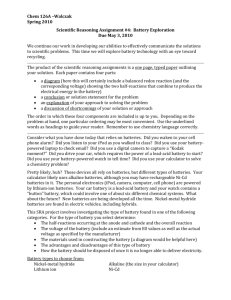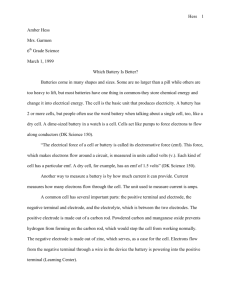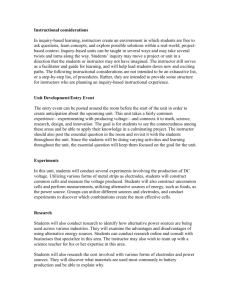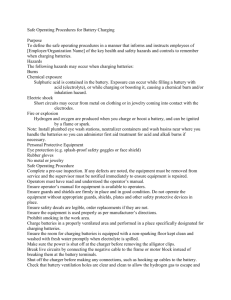Make your own Battery
advertisement
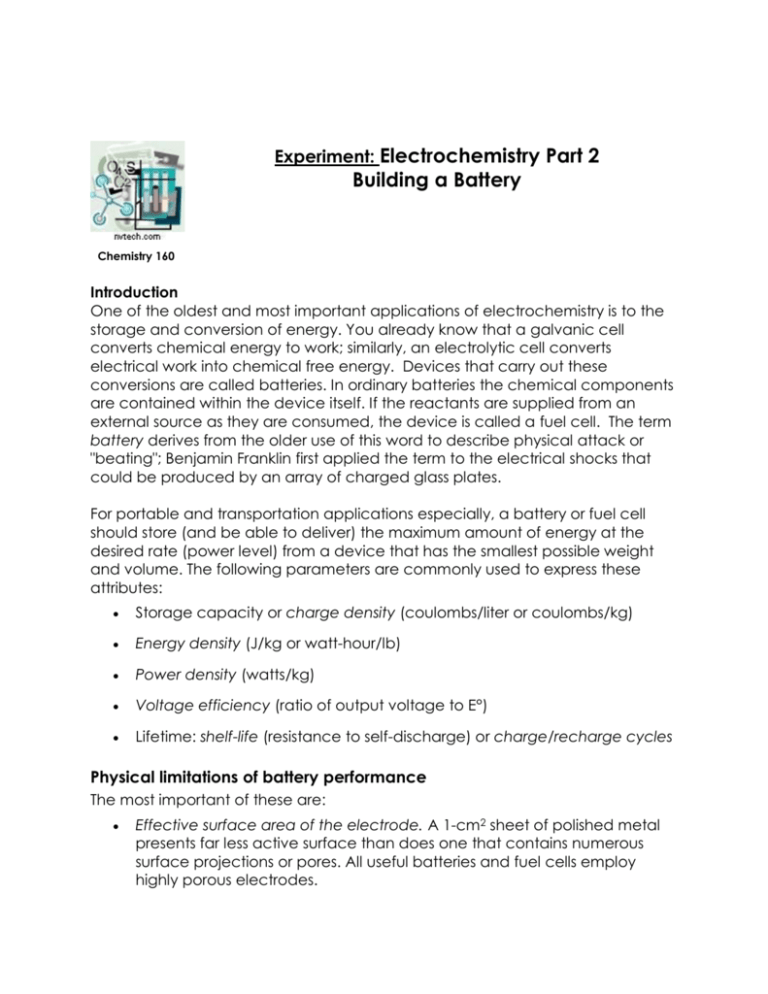
Experiment: Electrochemistry Part 2 Building a Battery Chemistry 160 Introduction One of the oldest and most important applications of electrochemistry is to the storage and conversion of energy. You already know that a galvanic cell converts chemical energy to work; similarly, an electrolytic cell converts electrical work into chemical free energy. Devices that carry out these conversions are called batteries. In ordinary batteries the chemical components are contained within the device itself. If the reactants are supplied from an external source as they are consumed, the device is called a fuel cell. The term battery derives from the older use of this word to describe physical attack or "beating"; Benjamin Franklin first applied the term to the electrical shocks that could be produced by an array of charged glass plates. For portable and transportation applications especially, a battery or fuel cell should store (and be able to deliver) the maximum amount of energy at the desired rate (power level) from a device that has the smallest possible weight and volume. The following parameters are commonly used to express these attributes: Storage capacity or charge density (coulombs/liter or coulombs/kg) Energy density (J/kg or watt-hour/lb) Power density (watts/kg) Voltage efficiency (ratio of output voltage to E°) Lifetime: shelf-life (resistance to self-discharge) or charge/recharge cycles Physical limitations of battery performance The most important of these are: Effective surface area of the electrode. A 1-cm2 sheet of polished metal presents far less active surface than does one that contains numerous surface projections or pores. All useful batteries and fuel cells employ highly porous electrodes. Current density of electrode surface. Expressed in amperes m–2, this is essentially a measure of the catalytic ability of the electrode, that is, its ability to reduce the activation energy of the electron transfer process. Rate at which electroactive components can be delivered to or depart from the active electrode surface. These processes are controlled by thermal diffusion and are inhibited by the very narrow pores that are needed to produce the large active surface area. Side reactions and irreversible processes. The products of the discharge reaction may tend to react with the charge-storing components. Thermal diffusion can also cause self-discharge, limiting the shelf life of the battery. Recharging of some storage batteries may lead to formation of less active modifications of solid phases, thus reducing the number of charge/discharge cycles possible. Clearly, these are all primarily kinetic and mechanistic factors which require a great deal of experimentation to understand and optimize. Introduction taken from the following website Time to make a battery and save yourself from doom! Suppose you are stranded on a boat somewhere in the ocean and you have to power up your GPS (global positioning system) unit in order to find your way home. You have no replacement batteries. How much voltage can you generate from items commonly found on your boat? Is it enough to power you GPS? Pre-lab Bring items to class that might be useful in constructing a battery that are also commonly found on a boat. Post Lab 1. Write an Abstract 2. Write a discussion explaining to a non-scientists how a battery works. Use background information (i.e. galvanic cells, your research on a selected battery, etc…) as well as results and pictures from your self-constructed battery. This does not need to be technical writing! Have fun with it!




